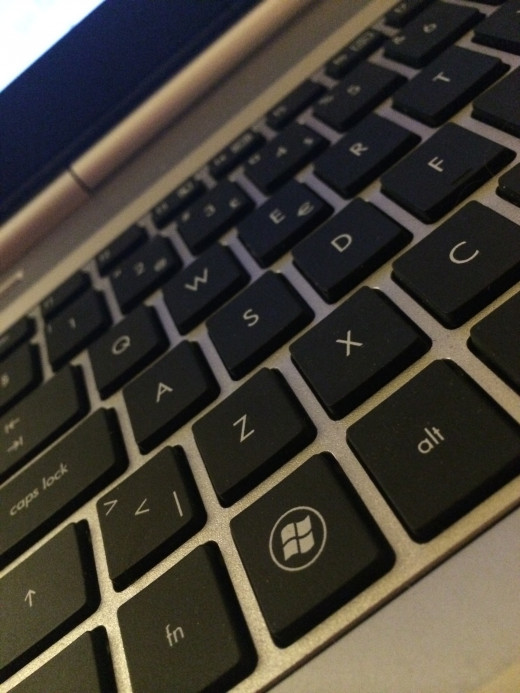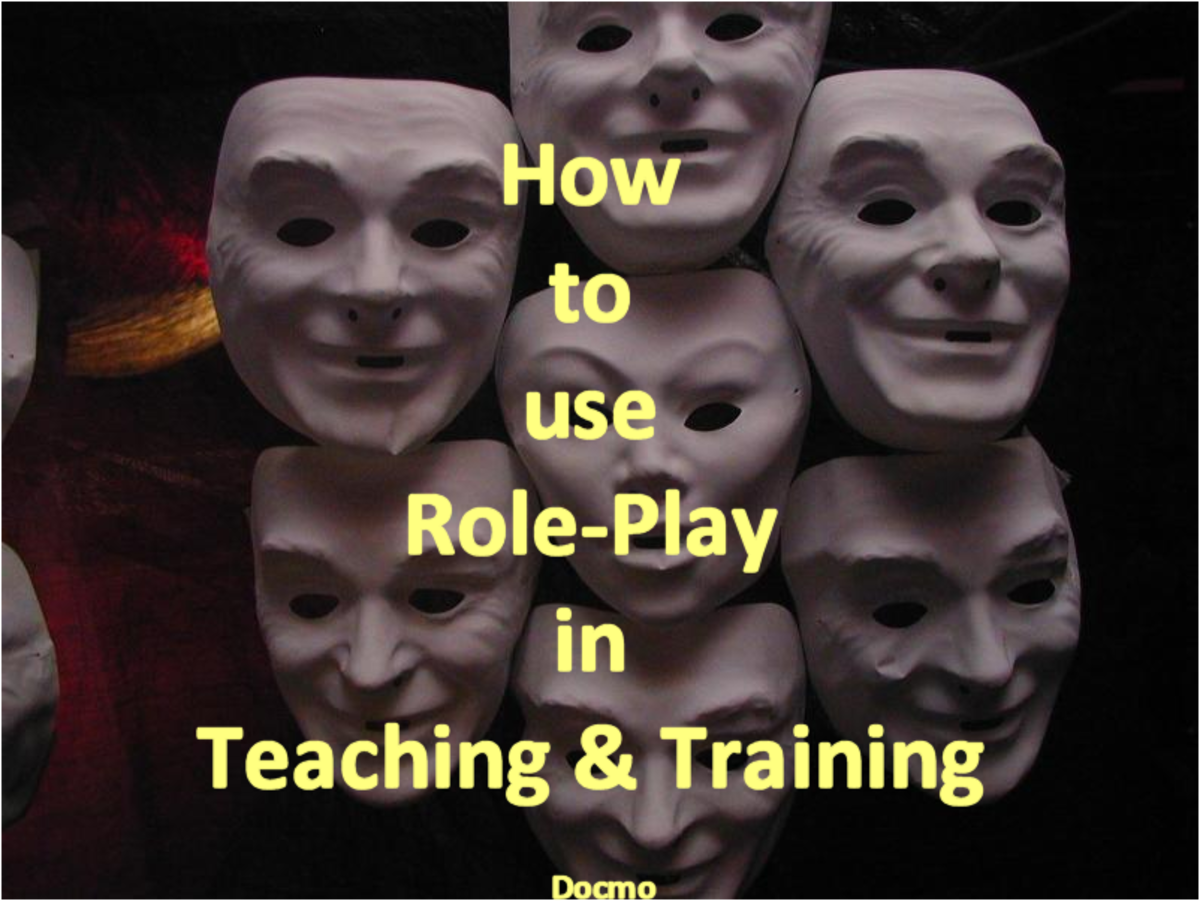Why use ICT in education, how to practice it?
In today’s world, most of us are accustomed to using technology in our homes. Our children more than others... To use ICT (which means Information and Communications Technology) is becoming more and more common in schools and higher education. However, a lot of teachers feel that they don’t really get the point or see how to use ICT.
In this hub, I will start to case the possibilities with ICT. There is so much to say and discover, but I chose to delimit to benefits, weaknesses and some hands-on advice based on what I have seen works well in the education activities in my company.
I’m writing this hub based on my experiences from working with education development. My company’s main activity is to provide education. Our “students” are adults who get trained for their work. I obtained my knowledge from ICT-training and courses, my own research and also by interaction on the Internet and within my company.
Why not taking advantage of knowledge that students have? And why not let them use technology in class when it has made such an important impact on their lives?
The future starts now
In the beginning -E-learning
Looking back, we can see how the use of e-learning increased 15-20 years ago. But there really was much gain. Students felt forsaken. In College and University, many dropped out of courses. The main cause might be “computer based training” which means lack of human interaction, feedback and support. Why should ICT work better? A small detail that is not so small is that the C stands for communication. Students today can interact, anytime, anywhere. They are used to social media and can even use it in their conversation with other students and teachers. That is the big different as I see it.

Do you see benefits, using technology for teaching?
ICT -what are the benefits versus weaknesses?
There are some different parameters that influence the use of ICT. I decided to focus on technology and pedagogy as the major subjects for this hub. I am no technology expert, but I know how to use it for supporting the pedagogical methods.
There are some direct benefits with using technology in education, among others:
- It offers opportunities for students to ”meet" independent of time and place.
- Teachers get new possibilities to see all students progress.
- Possibility to use technology to check whether the students understand or not.
- It should support the learning process.
- Technology might also offer opportunities for more variation in pedagogical methods.
- Most of the above gives the teacher opportunities to offer more individual support in class.
Some of the weaknesses are:
- A large number of today’s teachers are not used to the technology.
- In many schools, students have got computers, but the classes are held in a traditional way. This can cause unwanted situations where students use their computers for private business and teachers feel that they lose control.
- Higher demand on technology supplies like servers, WI-FI and so on.
ICT -how to use it for education?
Schools should prepare for using ICT. They set up a platform for education, for example a Moodle-platform (see https://moodle.org). (Moodle is a freeware, which means it can be used for free).
I like to describe such platform as a “digital classroom,” a place where teachers teach and students learn.
Every teacher has to fill their digital classroom with some material. In a real classroom, you have an interactive board, a White-board, a projector and so on.
One of the most important things in using ICT for education is to make sure the possibilities to interact is well prepared. Worst scenario is a student sitting in front of the computer and there is no possibilities to communicate. A suggestion is to use existing social media as Facebook. Create a "private" group for your class. All students are able to see all questions AND answers. If the teacher "forget" to offer interaction online, the C in ICT are lost. What is left is "just IT".
Before setting up the digital classroom, it is time to pause for a while and ask a few questions:
1 What do you need in your digital classroom to carry out your class?
- Material to read, questions to check understanding, Podcasts, videos, forum, chat, wiki, and so on. There are possibilities to put in new materials during the classes. But be sure you make a plan and a structure before you start uploading material. Choose which material to use for which class/subject. Build a structure for your session/term. For example, break down the session/term in smaller periods. Make sure the students get clear deadlines and tasks to accomplish.
Video is powerful to use, and it is not about just recording all lectures or PowerPoint presentations. Here are a few examples of videos for education:
Vi Hart talking about Pytaghoras
A great benefit from using video is that it gives the students an opportunity to go back and forward. They are able to watch an instruction or explanation as many times as they like.
Khan Academy about renting vs buying a home
2 What else do your students need?
- Enough material to handle the tasks for the classes.
- Possibilities to interact with other students and the teacher.
- Some checkpoints to see that they are ”on track.”
- Deadlines for accomplishing every task.
3 How to meet different needs?
- Using a digital classroom provides opportunities for a teacher to be more flexible. A teacher can obtain reports on everything the students do in the digital classroom. That means it is possible to see if someone is not ”on track”. Then, it’s possible to provide support to a single student. One of the benefits with not facing the class 8 hours long.
- Every student has tasks and they have to write a lot. In a traditional classroom, some students sit quiet and can get away with that for a while. In the digital classroom, teachers can read all texts from the beginning. It is easy to discover if someone don’t understand.
- It also is possible to meet in real person and go through some difficult sections.
4 What if my students don’t do what I want them to?
- As a teacher, as I mentioned, it is possible to follow up with every student’s activities in the class. If someone doesn’t do what he/she is supposed to do, the teacher will do what teachers do – face the student and try to help.
5 What pedagogical methods am I going to use in these classes?
- There can be teamwork.
- Set up problems to solve and report in class blog.
- Search for links in a specific subject. Make presentations of them and give some reasons why they are good/no good.
- Students check on each other tasks (peer review)
- Let the students make movies as examinations.
- Use Smart phones, interactive boards, Ipads or whatever suits you and your students. Maybe ask them to choose.
- Flipped classroom (I will get back to this in a later hub)
- Blended learning (I will get back to this in a later hub)
There are a lot more, of course, consider this being suggestions.
Now, after answering these questions, it i time to make a lesson plan! Of course, there are more aspects and questions to ask. This can however make a good start to begin the journey in to the ICT-world.

How to learn more about the technology?
To learn about how to use your digital classroom, search the Internet. There are on line manuals, forums and there are of course You tube videos.
Some schools ask their students to help out with the technology. They teach the teachers, who can later on focus on the class, and on the pedagogical methods.
Above all, have fun, learn together, and don’t be afraid. Here is lot to gain and less to lose. Your pedagogical knowledge is still as important as it ever was! You have the know-how and that will not change.
There are a lot of opportunities in using ICT, but we should consider for each class, what gives the most benefits from a pedagogic point of view: digital classroom or traditional classroom? This brings us to the concept “Blended learning,” which I will come back to in another hub.
Hub about Blended learning by Kerlund74:
- How to Improve my Technological Knowledge for Use in Class?
The most common issue in using ICT (information and communications technology) is that many teachers today don’t possess the necessary technological knowledge. - Why Blended Learning? Isn’t just ICT enough?
It is a lot about online and e-learning when using ICT. But that is not the way it always has to be. Blended learning is about teaching both online and in a "ordinary" classroom.
© 2014 kerlund74



